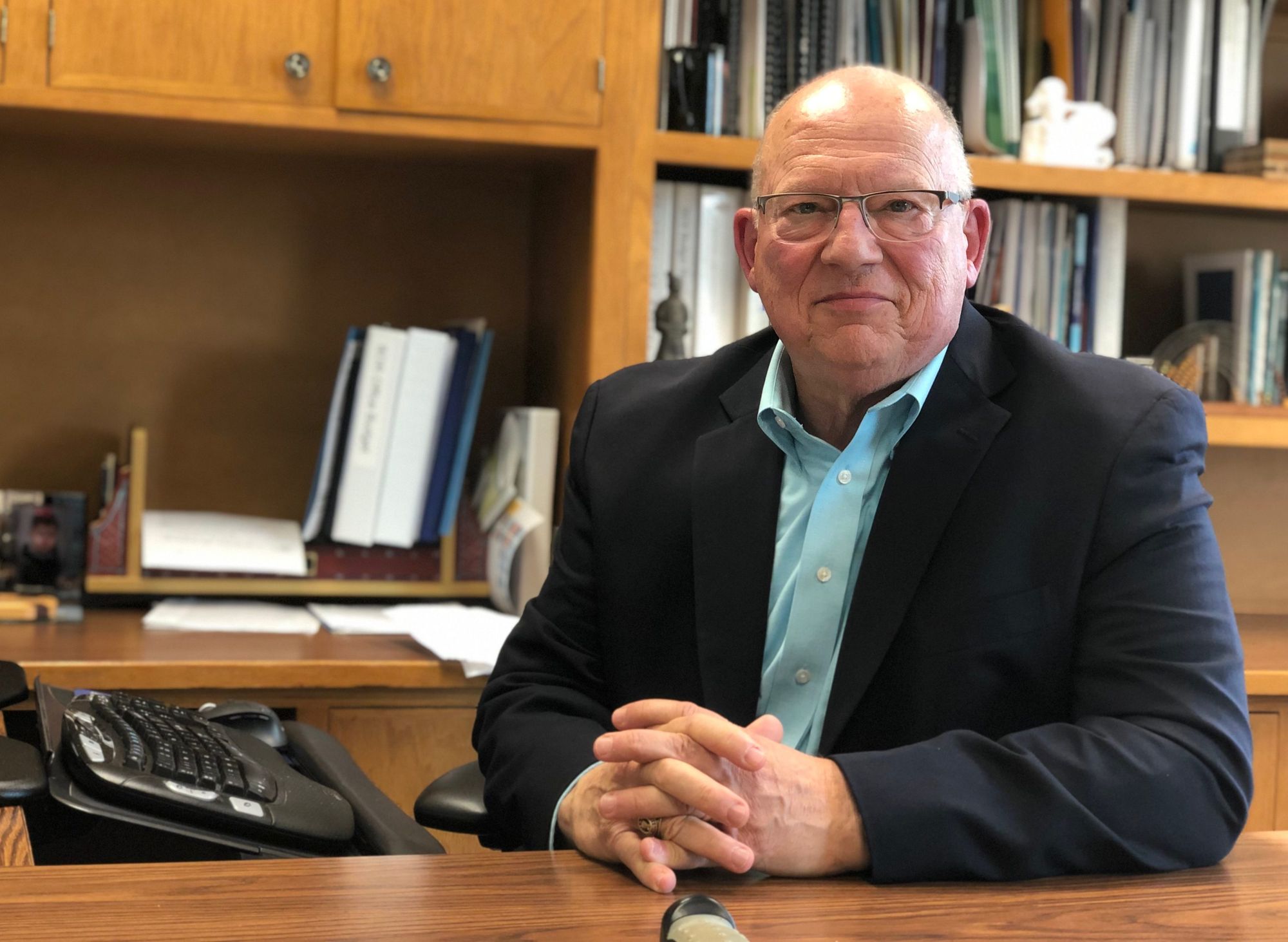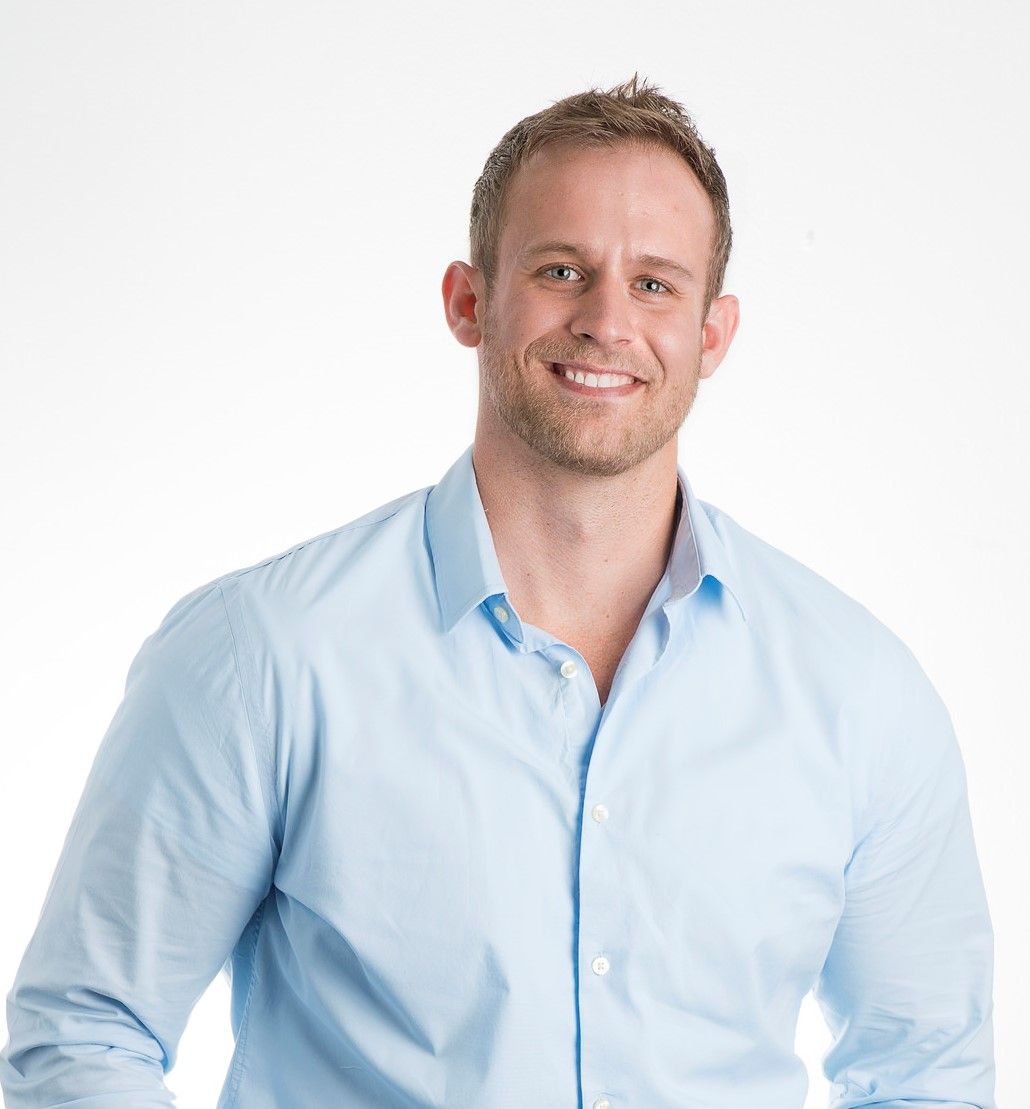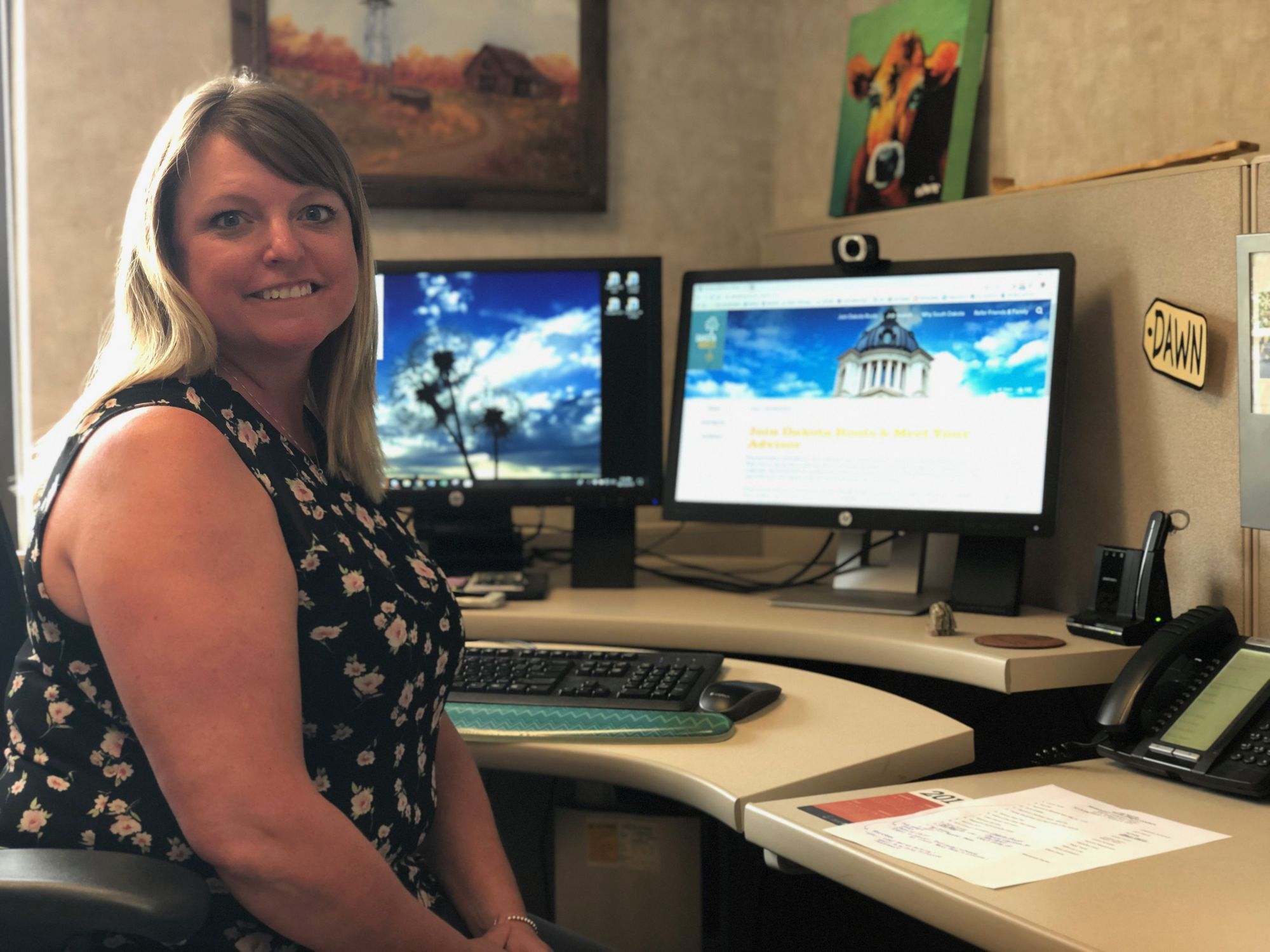Despite years of effort to reverse the trend, South Dakota remains among the worst states in the nation in terms of losing its most highly educated citizens to other areas of the country, according to a new report from Congress.
The loss of skilled, educated residents can slow the state’s economic growth as well as cause further political polarization in the state and nation, the new study shows. Brain drain has also been shown to weaken the ability of communities to support basic institutions such as churches and community groups.
The effects of brain drain are especially acute in rural states like South Dakota. Recruiting of doctors and nurses to work at rural hospitals has become more difficult, which in turn has made accessing healthcare services tougher. Finding high-quality teachers to work in rural schools has become more difficult too, causing some districts to increase class sizes. Some employers in high-paying fields such as medicine and technology must recruit foreign workers through visa programs to fill open jobs.
According to the study, called “Losing our Minds: Brain Drain Across Across the United States,” South Dakota’s most highly educated citizens are moving away at a higher rate than in nearly every other state. The report also contradicts the commonly held conception that highly educated people leave the state in their 20s and return in their 30s to raise families.
A combination of factors likely is driving younger, more highly educated people away from South Dakota. Jeremy Rud, a Madison, S.D., native who earned a bachelor’s degree from South Dakota State University in 2014 and went on to earn a master’s in linguistics from the University of Colorado in Boulder, Colo., just finished three years of teaching at SDSU. He said his reason for leaving South Dakota, now for the second time, was about a search for more cultural diversity.

“I don’t have any specific vendetta against South Dakota, it’s just that my specific cultural tastes lie elsewhere,” Rud said. “I also want a greater diversity of ideas, languages and access to the rest of the world.”
Rud was getting ready to move to California — the number two destination for highly educated South Dakotans who migrate — to pursue a Ph.D in linguistics when he spoke with South Dakota News Watch. Another part of his decision to move was a lack of opportunity to advance in his career field. He said he’s not alone in his desire for better opportunities.
“I have so many friends that have a master’s degree that now live in Minnesota,” Rud said.
Published in April 2019 by the Congressional Joint Economic Committee, the new study found that highly educated South Dakotans who leave the state tend to end up in Minnesota, California or Colorado by the time they reach 40. California and Colorado both tend to be hubs for the migration of highly educated people from all over the country. The fact that such hubs exist points to much bigger problems for the country as a whole, the study said.
Increasingly, people are congregating themselves geographically and along educational lines, said Rachel Sheffield, a senior policy adviser for the committee. Highly educated people, who tend to hold more liberal viewpoints, are concentrating themselves in cities in California, Washington, Oregon, Colorado, Texas, Massachusetts, New York, New Jersey and Washington, D.C., she said. Conservatives, meanwhile, are tending to stay in more rural areas. The two groups are interacting less, Sheffield said, which is exacerbating political divisions.
“If you’re not interacting with people with different political viewpoints, then you are less likely to have a face to go with differing viewpoints; that could lead to seeing different political viewpoints as connected to this unrelatable group that you never talk to and it’s easier to demonize people you don’t actually know,” Sheffield said.
Another problem identified in the study is that as certain areas have attracted more of the country’s highly educated people, they also have attracted a greater share of the nation’s venture capital and wealth. Entrepreneurs, particularly those in high-tech fields, face heightened pressure to move to areas such as Boston or Silicon Valley. That, in turn, has led to yet more highly educated people concentrating in those areas as more jobs that required their skills are created. The economies of those select portions of the country have boomed, while the economic fortunes of other areas grew far more modestly or in some cases actually shrank.
South Dakota is on the low end of the spectrum in economic growth. The state’s growth in annual Gross Domestic Product is generally smaller than national GDP growth. Since 2012, South Dakota’s GDP growth has averaged just shy of 1 percent every year, which is less than half of the 2.3 percent average national GDP growth.
Despite continued growth in the state’s population between 2010 and 2017, the share of South Dakota’s population that is between the ages of 18 and 64 shrank by 1.8 percent, according to the U.S. Census Bureau.
State officials and universities, meanwhile, are trying to find ways to keep educated people in the state. Start-up incubators at SDSU, South Dakota School of Mines & Technology and the University of South Dakota are helping highly educated South Dakota residents get their research or business ideas off the ground.
Dakota State University in Madison is planning to open a new computer technology research and development laboratory in October to lure top technology talent. The state Legislature passed a .5% sales tax increase in 2016 to generate new revenues to boost teacher pay to keep top educators from leaving after graduation.
Communities such as Sioux Falls, Rapid City and Aberdeen are making efforts to deepen the scope and breadth of their entertainment and cultural events to help keep young people in the state, said South Dakota Board of Regents Executive Director Paul Beran, who made keeping graduates from leaving one of his top three priorities when hired in 2018.
“I think you’d be putting your head in the sand if you didn’t think (brain drain) was a problem,” Beran said.

Low pay, fewer opportunities
LeighAnn Dunn, a special education teacher who earned her bachelor’s degree in speech pathology and audiology from USD with financial help from the federal G.I. Bill, said school districts in South Dakota aren’t capable of paying her or others a truly livable wage. Dunn has also earned a master’s degree in multi-categorical special education from USD and is about a year away from earning a doctorate in education.
Dunn, 35, teaches in a state that borders South Dakota and commutes to work from her home in Vermillion (she did not want to name which state.) She said the higher pay, incentives for continuing education and good job security offered in her current position are more than worth the extra commute and even paying income tax in a state where she does not reside.
“My pay, with my education, is almost double what I’d get in South Dakota and it increases yearly … If I worked in South Dakota, I could not afford even to get a home loan,” Dunn said. “The cost of living might be low but we are really behind the times in our wages around the state.”
In 2017, average teacher salaries in states surrounding South Dakota ranged between $5,300 and $11,200 more per year than in the Rushmore State. Dunn said many of her classmates have left the state in pursuit of higher pay.
“I can’t imagine myself coming back to teach in South Dakota, which is bad because I’ve got a lot of training and a lot of expertise,” Dunn said.

The congressional study looked at data from each U.S. Census taken between 1940 and 2000 as well as data from the Census Bureau’s 2010 and 2017 American Community Surveys. The study specifically targeted people between the ages of 31 and 40 who were considered to be in the top one-third of educational attainment for the U.S. In 2017 — essentially those who had obtained a bachelor’s degree or higher.
The study looked at two measures of brain drain. “Gross brain drain” is the number of highly educated people born in the state who choose to leave. “Net brain drain” is the gap between the number of highly educated people who were born in a state and choose to leave and the number of highly educated people who move into the state from somewhere else.
In every census since 1960, South Dakota was shown to have experienced a net loss of people in the top third of educational attainment. In 2017, the most recent year for which data is available, South Dakota had the second-highest rate of gross brain drain in the country. None of South Dakota’s neighbors, meanwhile, made the top 10 list for gross brain drain, meaning they retained more of their highly educated children into their 40s. Vermont had the nation’s highest rate of gross brain drain.
South Dakota also had the third-highest rate of net brain drain in 2017, meaning the state was third worst in the country at replacing its losses of highly educated people with highly educated people from somewhere else. North Dakota topped the net brain drain list and Delaware was number two. Iowa came in at number four on the net brain drain list.
The loss of native-born residents is another of the problems for states with high rates of gross brain drain identified in the congressional study. Highly educated people who live and work in the state they grew up in often have a better picture of a state’s needs than highly educated people who move in from somewhere else, the study said.
Nick Kelly, 28, who holds a master’s degree in engineering management from SDSM&T, said the decision to leave South Dakota mainly had to do with a lack of job options, the absence of a large airport and lack of cultural opportunities. He now lives in Bloomington, Minn., just outside of Minneapolis with his wife — who holds a master’s degree in biomedical engineering from SDSM&T — and their child. Both Kelly and his wife were able to find good paying jobs in engineering there, he said.
Kelly said that while he was in school and looking for jobs at engineering career fairs, he was disappointed to see that most in-state jobs dealt with chemical engineering in the ethanol industry. He wasn’t interested in those. Most of the other employers at the job fairs weren’t recruiting for positions in South Dakota, Kelly said.
“There just weren’t very many opportunities,” he said.
A Mitchell-based company did offer him a job after he graduated, Kelly said. The offer wasn’t good enough to keep him in the state in part because his wife wouldn’t have been able to pursue her own career goals there. Kelly now works for an electronics company that designs equipment which makes shipping packages more efficient, a job he said he wouldn’t have found in South Dakota.
Many South Dakota college graduates say they don’t want to leave the state. Ray Hespen graduated from SDSM&T in 2009 with a degree in mining engineering. He said he loved Rapid City and the Black Hills and had a goal to get a job at a Rapid City cement plant so he could stay. The plant was about the only employer in the Black Hills at that time that needed mining engineers. Unfortunately, there weren’t any openings.
Hespen spent four years touring around the country and chasing job opportunities. He started his career in Tulsa, Okla., then moved to California, then to Chicago, then went to Baltimore and finally landed in Colorado in 2013. That year, Hespen and his friend, David Kingman, founded Property Meld, a company based around a software program that automates parts of the property management business as a way to save money and improve customer service.
“I moved to Denver as kind of a hedge. If my company didn’t work out, I figured I could find something there,” Hespen said.
As Property Meld gained traction and started growing, Hespen said, he was able to move back to the Black Hills after nearly a decade of looking for a job there.
“What’s crazy is, I had to start a business to come back,” Hespen said.

Slowing the drain
Property Meld’s first official headquarters was an office at Ascent Innovation, a business incubator created by the Rapid City Development Corporation on the SDSM&T campus. Business incubators provide space for new businesses as well as free or low-cost business services. They also aim to allow entrepreneurs such as Hespen collaborate with fellow business owners.
Ascent Innovation is one of several business incubators that have been built on or near university campuses around the state. The idea is to allow university students and researchers to take their ideas from the lab to the open market and, ultimately, to create the types of job opportunities that will prevent highly educated people from leaving the state in the first place, said Joseph Wright, associate vice president for research and economic development at SDSM&T.
“There are plenty of students who would want to stay in the state if we had the kind of jobs that attract that kind of talent,” Wright said.
One such success story in Rapid City is VRC Metal Systems, which recently moved to a new facility outside of Ellsworth Air Force Base. The company makes machines that spray metals onto other surfaces at such a high speed that they permanently bond to the surface. The process can be used to repair everything from aircraft to bridges.
Hespen’s company, though, isn’t hiring too many engineers or software developers in South Dakota. He said most of his local employees do have bachelor’s degrees but are working in sales, tech support and marketing. The company’s software developers, including company co-founder David Kingman, work remotely from areas outside the state.
Thanks to the internet, a growing number of workers in the technology sector are able to work remotely. Dakota State University in Madison is hoping to capitalize on the trend with its new cyber security research facility called Madison Cyber Labs.
“Many (computer technology) students get scholarships and grants that require them to work for government agencies after they graduate. Those students have nowhere in South Dakota to go to fulfill those requirements,” DSU President José-Marie Griffiths said.
Madison Cyber Labs is intended to function both as a research and development hub and as a potential satellite office for private companies and federal agencies engaged in cyber security.
“Many agencies are looking to open satellite offices,” Griffiths said.
Sometimes, just giving graduates a better picture of what jobs are available in South Dakota can help keep them in the state or lure them back, Griffiths said.

The state Department of Labor and Regulation has been working to do that for the better part of a decade through its Dakota Roots program, which is aimed at bringing talented people back to South Dakota. Around 4,100 people have been placed across a wide array of jobs through Dakota Roots, said Dawn Dovre, who manages the program.
Dakota Roots doesn’t target people based on education and is open to everyone but there are some highly educated people who have been placed in jobs through the program, Dovre said. “We’ve seen a little bit of everything,” she said.
Still, she added, it’s easier to keep workers in South Dakota than to try to recruit them back later.
Reducing the cost of college could go a long way to keeping graduates in the state, said Beran, CEO of the Board of Regents. The state’s public universities have some of the highest net costs of attendance in the nation, according to BOR data, and federal data show that many graduates in South Dakota carry high levels of college debt.
“Where we are failing right now is making sure everyone who is capable of getting into the next level of education is getting there,” Beran said.
South Dakota’s brain drain isn’t going to be slowed by a single program or initiative, Beran said. Cities across the state will need to support entrepreneurs, push for the expansion of broadband internet service, look for ways to deepen their sense of community and broaden their cultural horizons.
“There are going to be many small solutions,” Beran said. “That, ultimately, is going to be what makes the state strong.”



